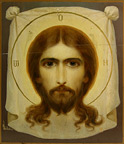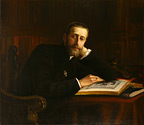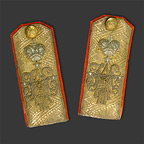“Imperial Legacy in the Collections of Holy Trinity Seminary” discussed at CREEES,
Stanford University
 On October 23, 2008, the Center for Russian, East European and Eurasian Studies at Stanford University sponsored a presentation by Holy Trinity Seminary’s Dean and Director of Archives, Deacon Vladimir Tsurikov, discussing the “Imperial Legacy in the Collections of Holy Trinity Seminary”.
On October 23, 2008, the Center for Russian, East European and Eurasian Studies at Stanford University sponsored a presentation by Holy Trinity Seminary’s Dean and Director of Archives, Deacon Vladimir Tsurikov, discussing the “Imperial Legacy in the Collections of Holy Trinity Seminary”.  The presentation, which included slides of various museum items, focused on the history of collection development of Holy Trinity Seminary’s archival, print and museum collections, and Romanov provenance. Deacon Vladimir focused his comments primarily on items of spiritual significance for the community of Russian Orthodox believers; hence the items chosen for the presentation focused on collections received from Princess Vera Konstantinovna and Grand Duchess Kseniia Aleksandrovna, especially in their relation to the veneration in the Orthodox Church of the last Romanovs as saints.
The presentation, which included slides of various museum items, focused on the history of collection development of Holy Trinity Seminary’s archival, print and museum collections, and Romanov provenance. Deacon Vladimir focused his comments primarily on items of spiritual significance for the community of Russian Orthodox believers; hence the items chosen for the presentation focused on collections received from Princess Vera Konstantinovna and Grand Duchess Kseniia Aleksandrovna, especially in their relation to the veneration in the Orthodox Church of the last Romanovs as saints. Current challenges, as well as further necessary steps aimed at the direction of the study and preservation of historical and cultural objets d'art held at Holy Trinity Seminary, were addressed in the conclusion of the presentation.
Current challenges, as well as further necessary steps aimed at the direction of the study and preservation of historical and cultural objets d'art held at Holy Trinity Seminary, were addressed in the conclusion of the presentation.The necessity to examine the broader context of such collections and their connection to similar resources, and the prospect of establishing the necessary conditions for cooperative projects with both academic and secular institutions by reaching out beyond ecclesiastical and ethnic borders, was brought up as an important focus for future efforts.